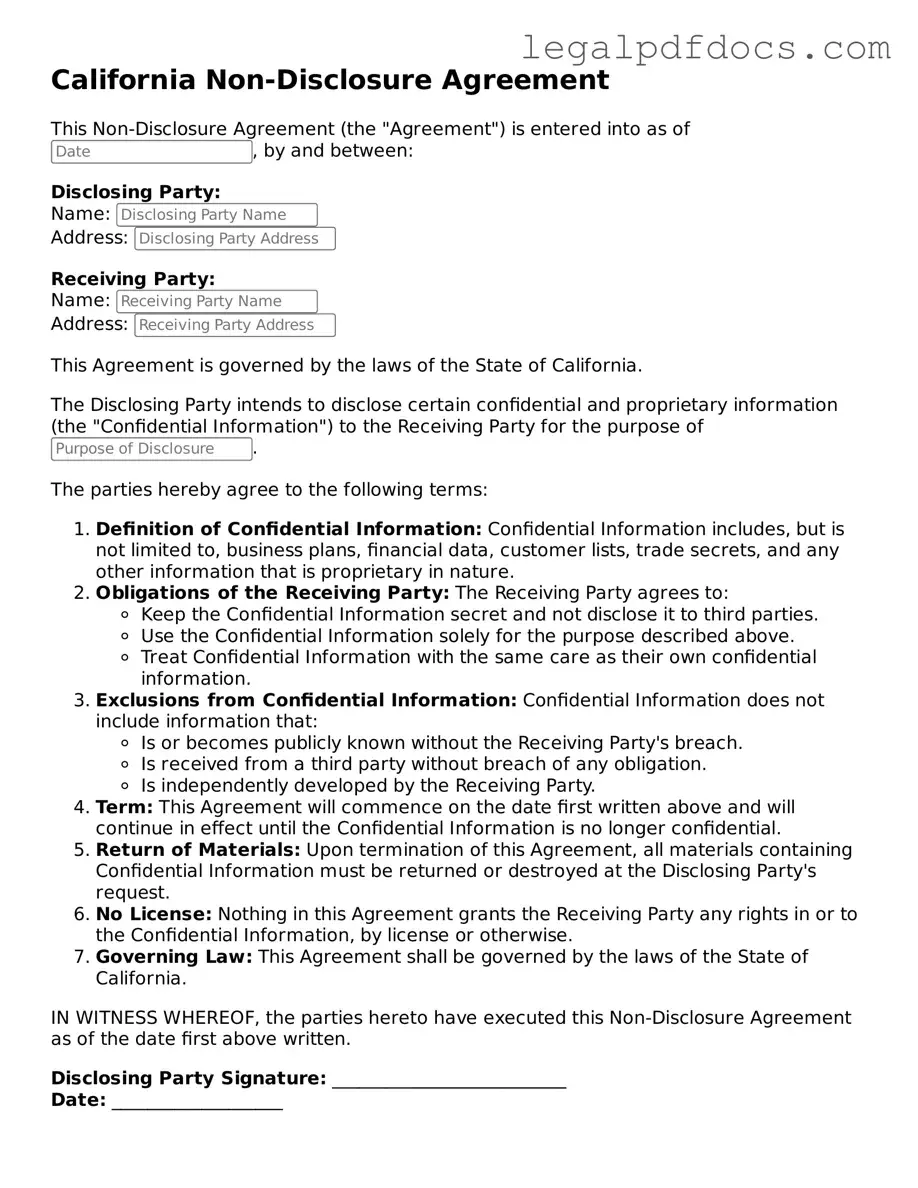In the competitive landscape of business, protecting sensitive information is crucial, and this is where the California Non-disclosure Agreement (NDA) form comes into play. This legal document serves as a safeguard, ensuring that confidential information shared between parties remains private and secure. Typically used in various contexts, such as employment, partnerships, or collaborations, the NDA outlines the specific information deemed confidential and the obligations of the parties involved. It specifies the duration of confidentiality, detailing how long the information must be kept secret. Additionally, the form may include provisions regarding the consequences of breaching the agreement, which can range from legal action to financial penalties. By clearly defining what constitutes confidential information and the responsibilities of each party, the California NDA helps to foster trust and protect intellectual property, trade secrets, and other proprietary information. Understanding the nuances of this form is essential for anyone looking to engage in business activities where confidentiality is paramount.
